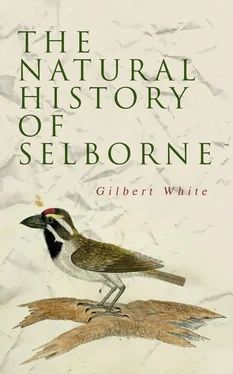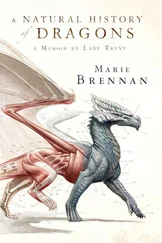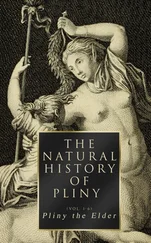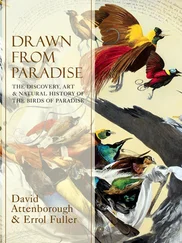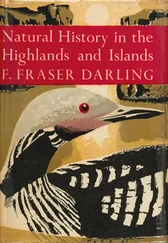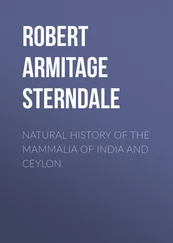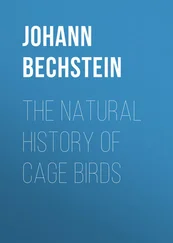Gilbert White
The Natural History of Selborne
Editor: Henry Morley
e-artnow, 2020
Contact: info@e-artnow.org
EAN: 4064066387006
Volume 1 VOLUME 1 Table of Contents
Volume 2
Table of Contents Table of Contents Volume 1 VOLUME 1 Table of Contents Volume 2
Table of Contents
INTRODUCTION.
LETTERS ADDRESSED TO THOMAS PENNANT, ESQ.
LETTER I.
LETTER II.
LETTER III.
LETTER IV.
LETTER V.
LETTER VI.
LETTER VII.
LETTER VIII.
LETTER IX.
LETTER X.
LETTER XI.
LETTER XII.
LETTER XIII.
LETTER XIV.
LETTER XV.
LETTER XVI.
LETTER XVII.
LETTER XVIII.
LETTER XIX.
LETTER XX.
LETTER XXI.
LETTER XXII.
LETTER XXIII.
LETTER XXIV.
TO THOMAS PENNANT, ESQUIRE.
LETTER XXV.
LETTER XXVI.
LETTER XXVII.
LETTER XXVIII.
LETTER XXIX.
LETTER XXX.
LETTER XXXI.
LETTER XXXII.
LETTER XXXIII.
LETTER XXXIV.
LETTER XXXV.
LETTER XXXVI.
LETTER XXXVII.
LETTER XXXVIII.
LETTER XXXIX.
LETTER XL.
LETTER XLI.
LETTER XLII.
LETTER XLIII.
LETTER XLIV.
LETTERS TO THE HON. DAINES BARRINGTON.
LETTER I.
LETTER II.
LETTER III.
LETTER IV.
LETTER V.
LETTER VI.
LETTER VII.
LETTER VIII
LETTER IX.
LETTER X.
LETTER XI.
LETTER XII.
LETTER XIII.
LETTER XIV.
Table of Contents
Gilbert White was born in the village of Selborne on the 18th of July, in the year 1720. His father was a gentleman of good means, with a house at Selborne and some acres of land. Gilbert had his school training at Basingstoke, from Thomas Warton, the father of the poet of that name, who was born at Basingstoke in 1728, six years younger than his brother Joseph, who had been born at Dunsford, in Surrey. Thomas Warton, their father, was the youngest of three sons of a rector of Breamore, in the New Forest, and the only son of the three who was not deaf and dumb. This Thomas, the elder, was an able man, who obtained a fellowship at Magdalen College, Oxford, became vicar of Basingstoke, in Hampshire, and was there headmaster of the school to which young Gilbert White was sent. He was referred to in Amhurst’s “Terræ Filius” as “a reverend poetical gentleman;” he knew Pope, and had credit enough for his verse to hold the office of Professor of Poetry at Oxford from 1718 to 1728. His genius for writing middling verse passed on to his more famous sons, Joseph and Thomas, and they both became in due time Oxford Professors of Poetry.
Gilbert White passed on from school to Oxford, where he entered Oriel College in 1739. He became a Fellow of Oriel, graduated M.A. in 1746, at the age of six-and-twenty, and six years afterwards he served as one of the Senior Proctors of the University. His love of nature grew with him from boyhood, and was associated with his earliest years of home. His heart abided with his native village. When he had taken holy orders he could have obtained college livings, but he cared only to go back to his native village, and the house in which he was born, paying a yearly visit to Oxford, and in that house, after a happy life that extended a few years over the threescore and ten, he died on the 26th of June, 1793.
Gilbert White never married, but lived in peaceful performance of light clerical duties and enjoyment of those observations of nature which his book records. His brothers, who shared his love of nature, aided instead of thwarting him in his studies of the natural history of Selborne, and as their lives were less secluded and they did not remain unmarried, they provided him with a family of young people to care about, for he lived to register the births of sixty-three nephews and nieces.
It was one of his brothers, who was a member of the Royal Society, by whom Gilbert White was persuaded, towards the close of his life, to gather his notes into a book. It was first published in a quarto volume in the year of the outbreak of the French Revolution with the fall of the Bastile. He was more concerned with the course of events in a martin’s nest than with the crash of empires, and no man ever made more evident the latent power of enjoyment that is left dead by those who live uneventful lives surrounded by a world of life and change and growth which they want eyes to see. Gilbert White was in his seventieth year when his book appeared, four years before his death. It was compiled from letters addressed to Thomas Pennant and the Hon. Daines Barrington.
Thomas Pennant was a naturalist six years younger than Gilbert White. He was born at Downing, in Flintshire, in 1726, and died in 1798, like White, in the house in which he had been born. His love of Natural History made him a traveller at home and abroad. He counted Buffon among his friends. He had written many books before the date of the publication of White’s “Selborne.” Pennant’s “British Zoology,” his “History of Quadrupeds” and “Arctic Zoology,” had a high reputation. He wrote also a Tour in Wales and a History of London.
Daines Barrington, fourth son of the first Viscount Barrington, was a year younger than Pennant, and died in 1800. He became Secretary to Greenwich Hospital, a Fellow of the Society of Antiquaries, and President of the Royal Society. His “Miscellanies,” published in 4to in 1781, deal with questions of Natural History, and of Antiquities, including a paper first published in 1775 asserting the possibility of approaching the North Pole. His most valued book was one of “Observations on the more Ancient Statutes.”
H.M.
LETTERS ADDRESSED TO THOMAS PENNANT, ESQ.
Table of Contents
Table of Contents
The parish of Selborne lies in the extreme eastern corner of the county of Hampshire, bordering on the county of Sussex, and not far from the county of Surrey; is about fifty miles south-west of London, in latitude fifty-one, and near mid-way between the towns of Alton and Petersfield. Being very large and extensive, it abuts on twelve parishes, two of which are in Sussex, viz., Trotton and Rogate. If you begin from the south and proceed westward, the adjacent parishes are Emshot, Newton Valence, Faringdon, Hartley Mauduit, Great Ward le Ham, Kingsley, Hadleigh, Bramshot, Trotton, Rogate, Lyffe, and Greatham. The soils of this district are almost as various and diversified as the views and aspects. The high part of the south-west consists of a vast hill of chalk, rising three hundred feet above the village, and is divided into a sheep-down, the high wood and a long hanging wood, called The Hanger. The covert of this eminence is altogether beech , the most lovely of all forest trees, whether we consider its smooth rind or bark, its glossy foliage, or graceful pendulous boughs. The down, or sheep-walk, is a pleasing, park-like spot, of about one mile by half that space, jutting out on the verge of the hill-country, where it begins to break down into the plains, and commanding a very engaging view, being an assemblage of hill, dale, wood-lands, heath, and water. The prospect is bounded to the south-east and east by the vast range of mountains called the Sussex Downs, by Guild-down near Guildford, and by the Downs round Dorking, and Ryegate in Surrey, to the north-east, which altogether, with the country beyond Alton and Farnham, form a noble and extensive outline.
At the foot of this hill, one stage or step from the uplands, lies the village, which consists of one single straggling street, three-quarters of a mile in length, in a sheltered vale, and running parallel with the Hanger. The houses are divided from the hill by a vein of stiff clay (good wheat land), yet stand on a rock of white stone, little in appearance removed from chalk; but seems so far from being calcareous, that it endures extreme heat. Yet that the freestone still preserves somewhat that is analogous to chalk, is plain from the beeches, which descend as low as those rocks extend, and no farther, and thrive as well on them, where the ground is steep, as on the chalks.
Читать дальше
